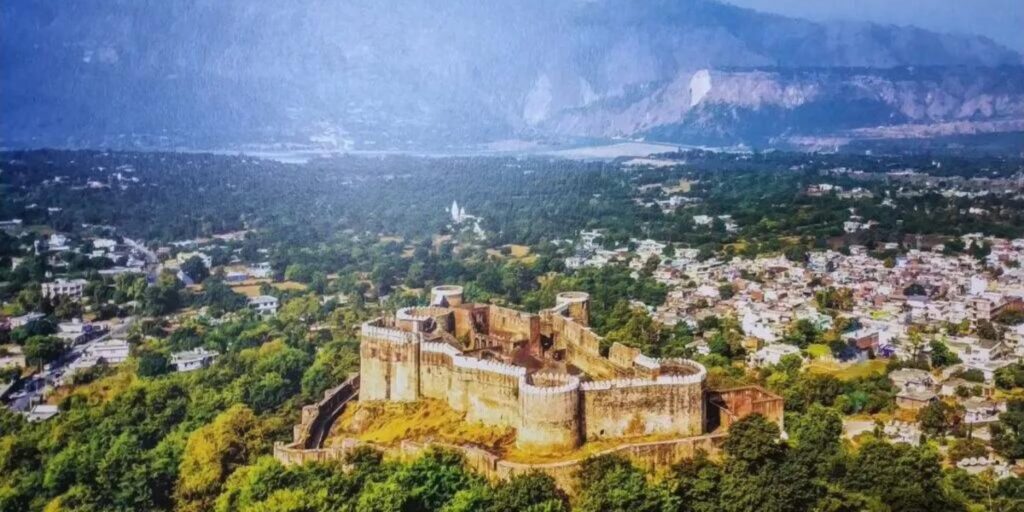Welcome to the majestic Bhimgarh Fort, a timeless bastion of history and heritage nestled amidst the serene landscapes of the Fort.
It is located in Reasi, just a stone’s throw away from the bustling town of Bhimgarh Fort, a distance from Jammu. However, rising proudly atop a rocky hillock, this architectural gem, also known as the Reasi Fort, commands attention with its imposing presence, standing approximately 150 meters above the ground.
Originally fashioned from clay by the visionary Raja Bhimdev Rasyal, the descendants of Raja Rishipal Rana orchestrated its evolution into a formidable stronghold of stone.
However, the visionary directive of Maharaja Gulab Singh in 1815 truly transformed this fortress under the skilled hands of Diwan Amir Chand.
Additionally, as you step into Bhimgarh Fort, prepare to embark on a journey through time, where each stone speaks volumes of a bygone era filled with courage, intrigue, and unparalleled grandeur.
1. Story of Bhimgarh Fort Jammu
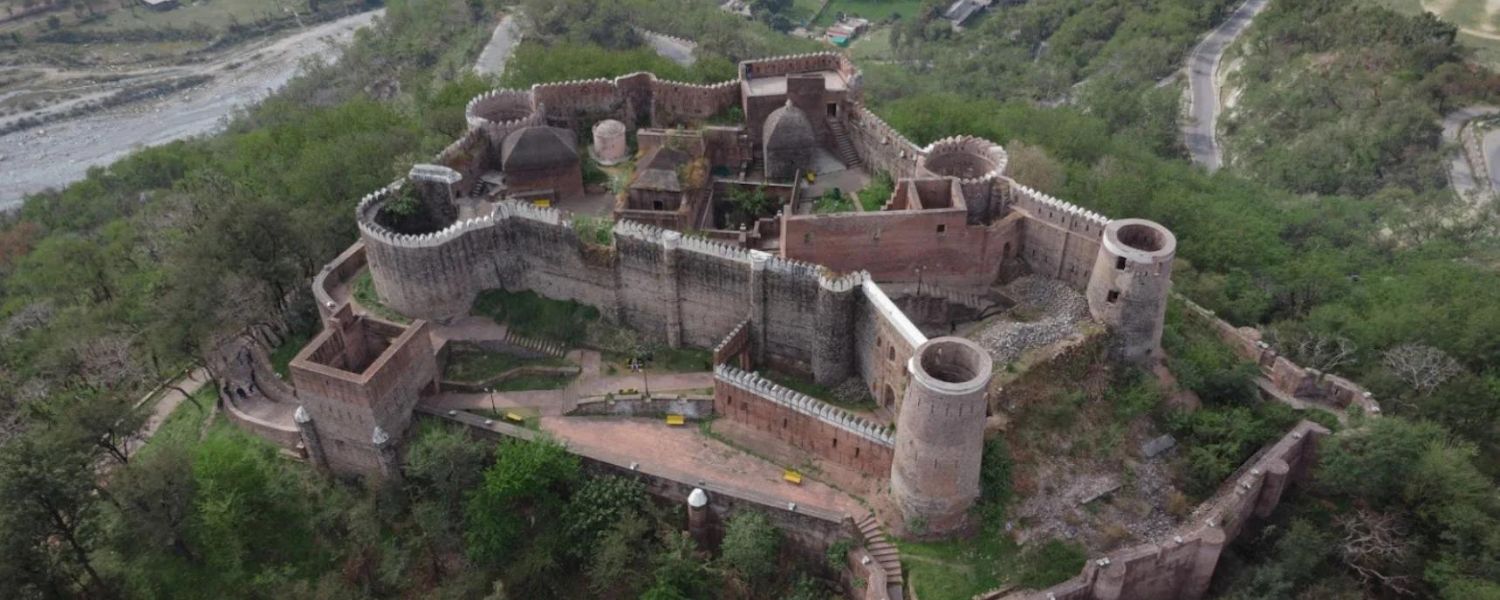
The breathtaking landscape of Jammu and Kashmir, Bhimgarh Fort, is a majestic sentinel of the region’s rich Bhimgarh fort history.
With its awe-inspiring architecture and panoramic views, this ancient fortress beckons avid history enthusiasts and curious visitors alike on a journey through time.
Additionally, seamlessly from its origins steeped in antiquity to its enduring significance today, Bhimgarh Fort is a captivating testament to the area’s glorious past.
As visitors enter this enchanting realm, they are greeted by whispers of fascinating tales and the echoes of centuries past. From its strategic positioning to its architectural marvels, every stone of Bhimgarh Fort tells a story waiting to be explored.
So, fasten your seatbelts (or rather your reading glasses!) and prepare for an immersive adventure into the heartwarming tale of Bhimgarh Fort, where history comes alive in every corner.
2. History
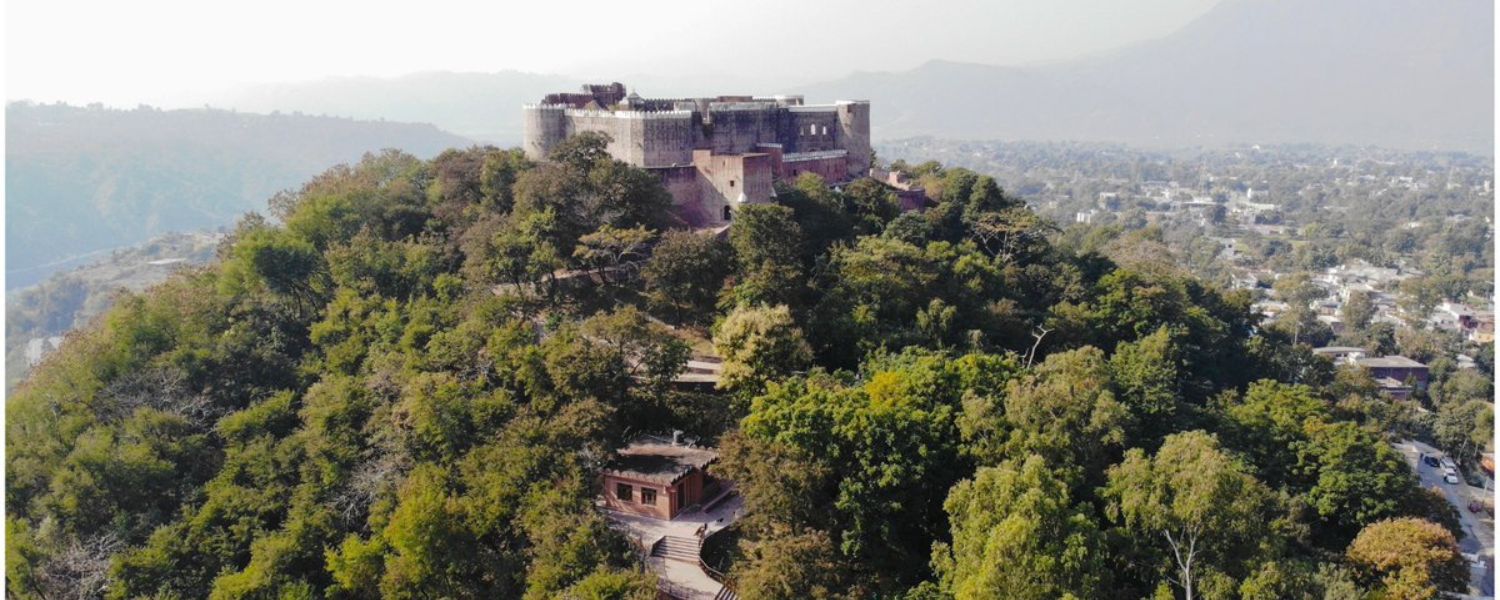
The Bhimgarh fort stands tall, echoing tales of a bygone era. Constructed under the patronage of Maharaja Ranjit Singh, this formidable fortress holds a legacy spanning centuries.
According to local lore, its name refers to Bhim, a legendary figure from the epic Mahabharata, who is said to have sought refuge within its walls during his exile.
Through the annals of time, successive rulers, including the esteemed Dogra kings, have left their indelible mark, enriching its architectural splendor.
Whether, witness to numerous battles and conquests, the sturdy ramparts of Bhimgarh fort stand as silent sentinels to a tumultuous past.
Today, visitors are enthralled by its amalgamation of Rajasthani and Mughal architectural styles, evident in its ornate gates, towering ramparts, and intricately crafted watchtowers.
3. Importance

The Bhimgarh Fort in Jammu holds immense historical and cultural significance. It stands as a testament to the region’s heritage and serves as a reminder of its glorious past.
However, one of the major reasons this fort is important is that it played a crucial role in defending against invaders during ancient times.
Additionally, its strategic location atop a hill provided an advantage for surveillance and protection, making it an essential stronghold.
Moreover, the fort bears witness to centuries of architectural brilliance. The intricate design and craftsmanship showcased in its walls, doorways, and windows are awe-inspiring.
Furthermore, Bhimgarh Fort has become a symbol of pride for the locals, connecting them with their roots and acting as a source of inspiration.
Moreover, it attracts tourists from far and wide, boosting tourism and promoting awareness about our rich cultural heritage.
4. Architecture
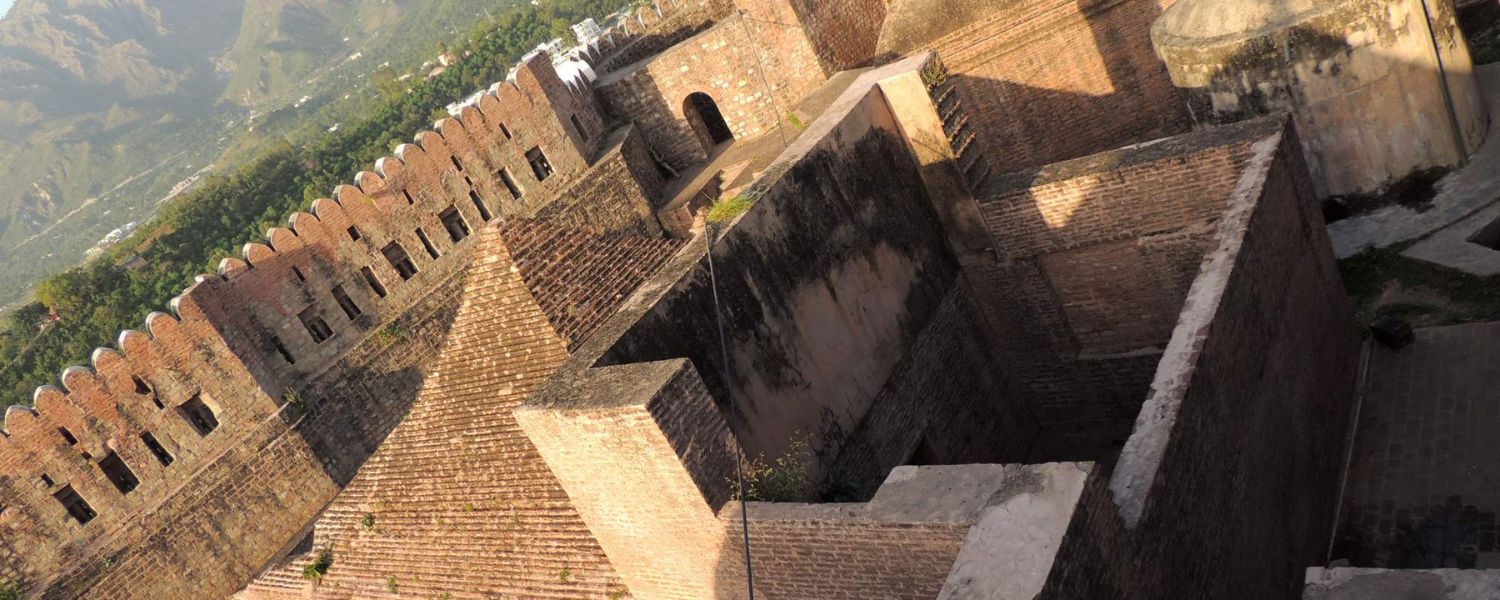
Bhimgarh Fort in Jammu is a testament to the region’s rich cultural tapestry. Its architecture seamlessly weaves elements from Mughal and Rajput styles, creating a captivating fusion that enchants visitors.
Furthermore, from its ornate gateways to its towering walls, the fort exudes a timeless charm that has captivated generations.
Although. constructed primarily with red sandstone, it emanates a rustic allure that complements its surroundings. Moreover, the meticulous craftsmanship in the intricate carvings and sculptures narrates tales of antiquity with finesse.
As one ventures into its interiors, they are greeted by expansive courtyards adorned with exquisitely designed arches and captivating murals.
Each section, from its mythological depictions to historical vignettes, serves as a portal to the past, inviting exploration and appreciation.
5. Today
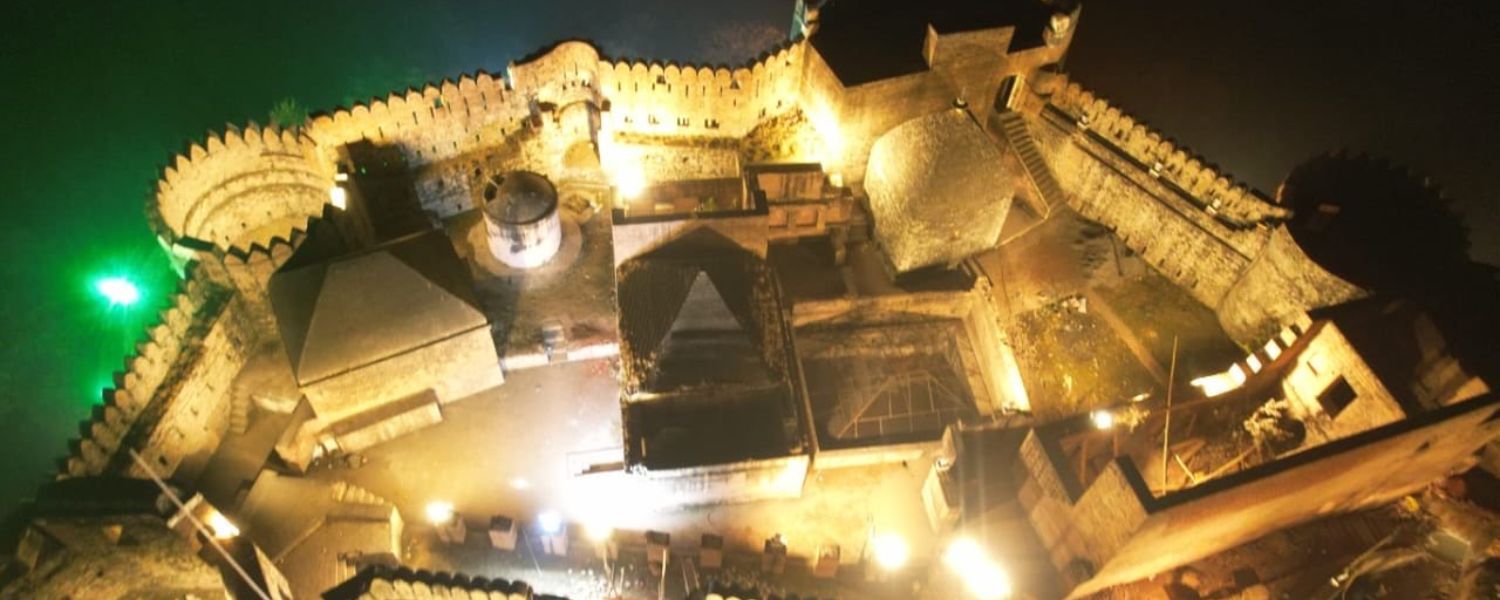
Bhimgarh Fort is a shining symbol of the region’s rich history and architectural prowess. Lovingly restored over time, this ancient fortress invites tourists to embark on a journey through the annals of time. Stepping through its formidable gates, one is instantly transported back in time.
Echoes of past battles and triumphs resonate through its sturdy walls, while intricately carved pillars narrate the tales of skilled artisans who labored to create this masterpiece.
Beyond its historical allure, the fort offers breathtaking panoramic views, captivating photographers and nature enthusiasts alike.
Whether strolling along its ramparts to admire the sprawling vistas or finding solace amidst centuries-old ruins, the fort promises an immersive experience.
Informative displays throughout the premises offer captivating insights into its storied past, enriching the visitor’s understanding.
Furthermore, regular cultural events featuring traditional music, dance, and folk art add a vibrant layer to the fort’s ambiance, deepening one’s connection to Jammu’s cultural heritage sites of Jammu and Kashmir in Bhimgarh fort.
6. How to get there
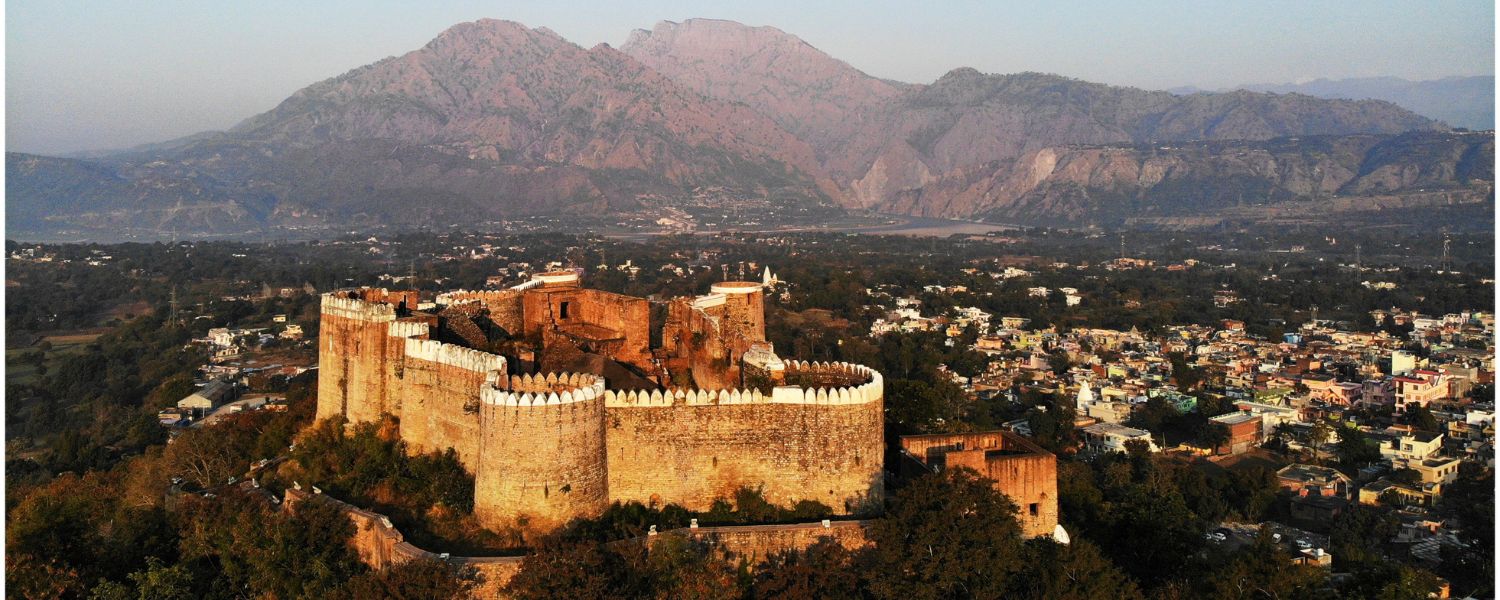
Mainly, due to its strategic location in Jammu, getting to Bhimgarh fort is a breeze. Whether you opt for air, rail, or road travel, numerous options cater to your convenience.
If air travel suits your preference, Jammu Airport is the nearest hub, boasting excellent connectivity with major Indian cities.
From there, a quick taxi ride or bus journey spanning around 30-40 minutes, depending on traffic, lands you at Bhimgarh fort.
For train enthusiasts, Jammu Tawi railway station is the prime choice, offering extensive links nationwide. However, upon arrival, a cab or local bus swiftly transports you to the fort.
Driving enthusiasts can rely on GPS navigation systems for a smooth journey, with the fort situated approximately 9 kilometers from the city center.
Expect a comfortable ride of about 20 minutes via private vehicle or hired taxi to arrive at this historical places in Jammu Gem.
7. Distance of Amarnath from Bhimgarh fort
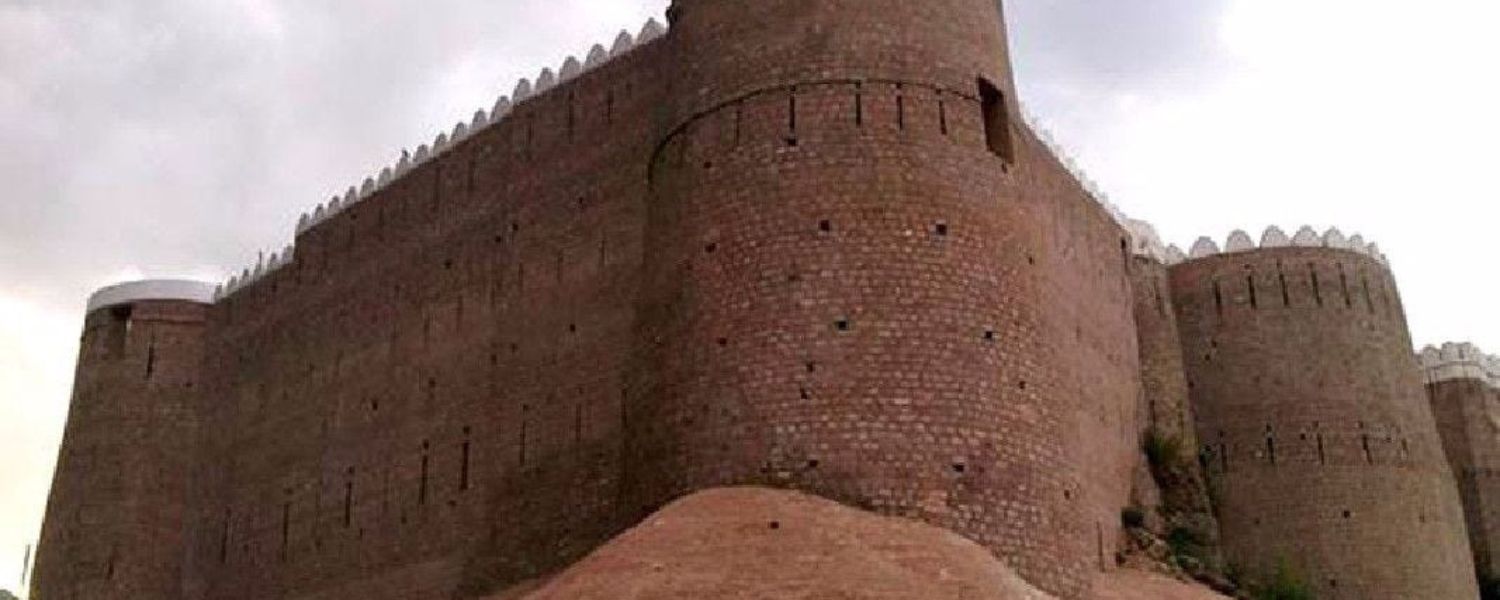
However, beyond its imposing walls lies a connection to something even more divine—the sacred pilgrimage to Amarnath.
Spanning approximately 300 kilometers and taking 6-7 hours by road from Bhimgarh fort, this path is not merely a physical voyage but a spiritual odyssey for devotees.
Transitioning from the fort’s awe-inspiring vistas, travelers embark on a pilgrimage through scenic towns like Srinagar and Sonmarg, culminating in the sacred base camp of Pahalgam.
Here, amidst the snow-capped peaks of Kashmir, pilgrims find solace and blessings at the legendary cave where the natural ice stalagmite of Lord Shiva resides.
Despite the distance and challenges, the faithful see this journey not as a burden but as a testament to their unwavering devotion.
Conclusion
In conclusion, Bhimgarh Fort is not only a monument of architectural brilliance but also a guardian of the region’s history and cultural heritage.
From its humble origins in clay to the grandeur it boasts today, each stone narrates tales of courage, resilience, and cultural fusion.
Renewed under the visionary directive of Maharaja Gulab Singh in 1815, the fort has withstood the test of time, captivating visitors with its Mughal and Rajput architectural marvels.
As a symbol of pride for locals and a beacon for tourists, Bhimgarh Fort in Reasi, Jammu & Kashmir connects the present to a storied past, inviting all to immerse themselves in the allure of antiquity.
FAQ
Q. Who renewed the Bhimgarh Fort?
A. In 1815, Maharaja Gulab Singh directed Diwan Amir Chand to reconstruct the Bhimgarh Fort.
Q. Who was the founder of Reasi?
A. Bhim Dev established the erstwhile Bhimgarh State, now called Reasi, in the eighth century. Brief accounts of successive rulers are known from 1652 when Hari Dev was the king of Jammu.
Q. What is the history of Bhimgarh Fort in Reasi?
A. Founded during the early medieval period of Indian history, Bhimgarh remained the center of small states until the 18th and 19th centuries AD.
The first fort was made of clay and mud. The founder of Reasi, King Rishipal Rana, or one of his successors, re-construct the entire structure in stone.
Q. Which state built Bhimgarh Fort?
A. Bhimgarh Fort, also known as Reasi Fort, is located 24 km from Bhimgarh Fort, 72 km from Katra, and 72 km from Jammu in the town of Reasi, Jammu & Kashmir.
However, it stands as a testament to the region’s historical significance. It is one of Kashmir’s finest examples of heritage, attracting visitors seeking cultural enrichment and architectural marvels.
